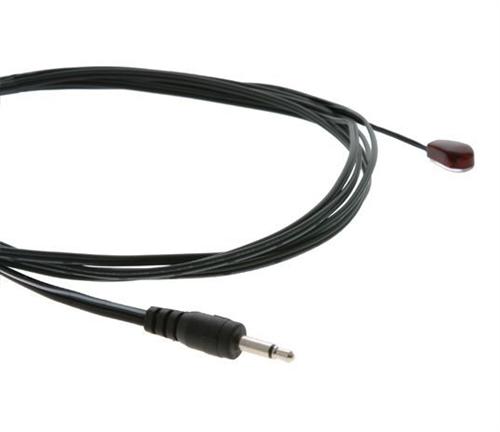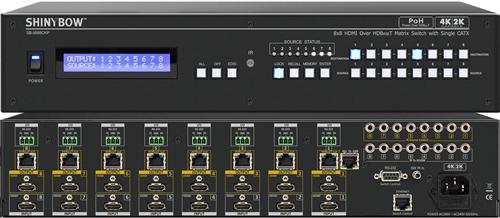I don’t see why not.
If you have a Genie system, you’re a “residential user.” You use DIRECTV at home. How do I know? Because except for very special circumstances, Genie hardware is not allowed on commercial accounts.
If you have a matrix switch, you’re probably a “commercial user.” You use DIRECTV in your bar, restaurant, hotel or other commercial space. I say “probably” because there aren’t any rules about using matrix switches in homes but most people just don’t need them.
Have you gotten this far and you still have no idea what I’m talking about? Here’s a video I did a few years ago.
A matrix switch (also called a matrix switcher) lets you put all your equipment in one rack and then distribute the signal from any box to any room. They’re used in bars, for example, to put the same game on 16 TVs without having 16 DIRECTV receivers. It’s pretty clear why you wouldn’t usually see them at home, but if your home is big enough you might just have one. After all, with 22 bedrooms, you’re probably not using them all at the same time. Why not have some of those rooms share one receiver?
I was recently asked if you could use a Genie client with a matrix switch. After all the Genie 2 is the only DIRECTV device to support two rooms of 4K, and if you want 4K in more than two rooms you might want a matrix switch to route that 4K content to multiple rooms. (At least that’s the theory. The guy just might have been trying to stump me.)
How it could work
There are two ways a matrix switch can control a Genie client (or any other piece of equipment): infrared and network. Infrared control uses a cable that comes from the matrix switch and then sits in front of the receiver. They tend to look like this:

The little reddish bulb at the top right sits in front of the TV and sends infrared commands the same way that a remote control would. This option is available on many matrix switches but it is becoming less common.
The other option is through the network. Commands are sent over Ethernet to the receiver or client, and it sort of “just works” as long as everything is hooked up right. An example of this is DIRECTV’s app for smartphones and tablets. They have a built-in remote control that lets you use your device just like a real remote.
The network option works with H24 and H25 receivers to be sure, as long as they are connected to the same network as the matrix switch. But will it work with Genie Clients?
It should work
Honestly I’ve never tried it but there’s every indication that it should work. Here are the reasons I think so:
It works with the app
There isn’t any problem controlling a Genie client with the DIRECTV app. I know that it uses the same protocols than a matrix switch would use.
There’s a setting in the client to set a static IP address
Setting a static IP address is always recommended for network control. If you don’t use one, the IP address could change. That would mean the network control would stop working.
There is an option to set a static IP address in the Genie client’s menus. It does work, it sets a static IP address and I’ve confirmed that the static IP address appears when I use a network discovery app on my phone.
Sure, there are other options in the Genie menus that don’t do anything but this seems to do what it says.
The client can be discovered on my router’s DHCP table when it doesn’t have a static IP.
Most devices today don’t use static IP addresses. You don’t have to give them a specific address like 192.168.8.45 when you hook them up. They rely on a system called DHCP which automatically assigns them an open address.
Before I gave my client a static IP address I saw that my router had assigned it an address, which is a sign that it’s communicating normally over Ethernet.
Anyone care to try?
Unfortunately I don’t have a matrix switch on my test bench. I will try it the next time our bench technicians are configuring a matrix switch.
In the meantime, can anyone say they’ve tried this in the field and that it works? I am pretty confident that it does.





